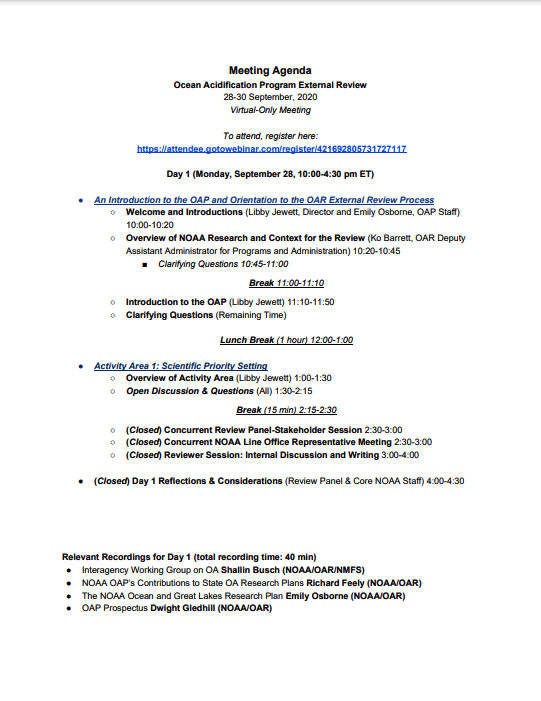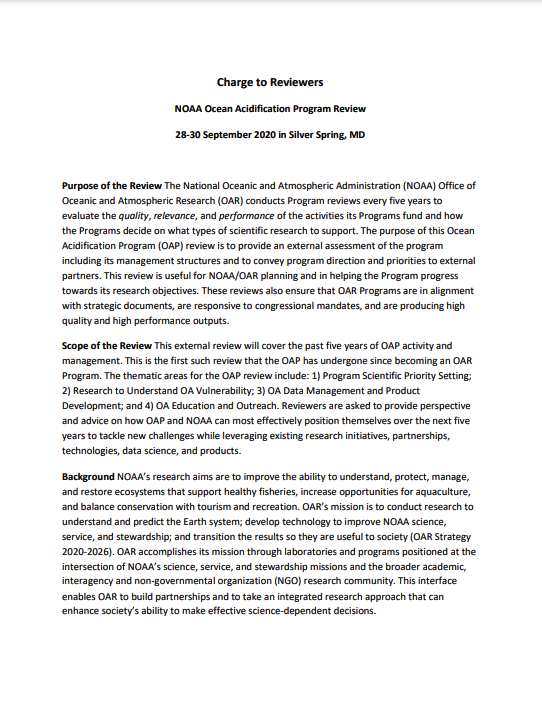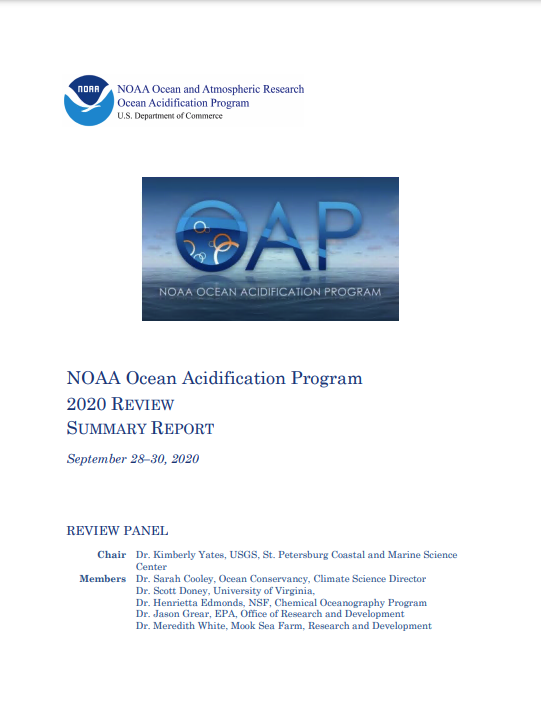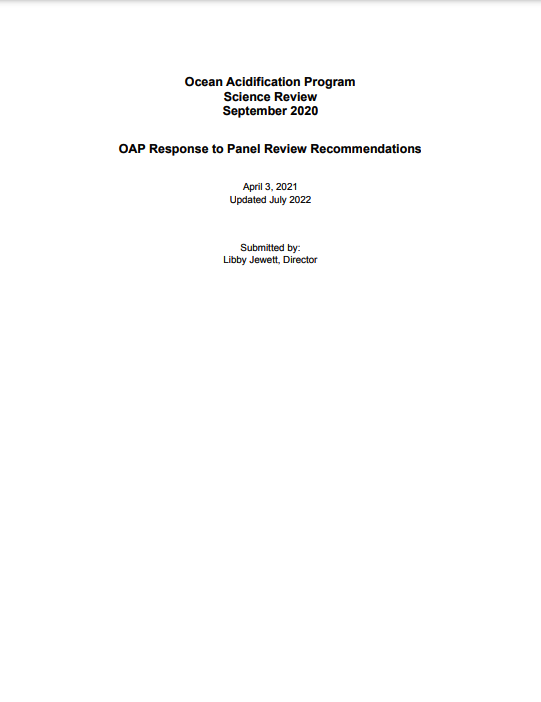We ensure our Program and its research portfolio meet the highest standards for quality, relevance and performance.
Every five years, the NOAA Research Science Council conducts a retrospective program review to discuss the direction of the program, to gain a full understanding of the processes involved, and to make recommendations on how to achieve the highest level of organizational excellence. Review the materials from our most recent review (2020) below.

2020 Review Panel Members

Much of his research focuses on how the global carbon cycle and ocean ecology respond to natural and human-driven climate change. One of his current areas of study is ocean acidification due to the invasion into the ocean of carbon dioxide and other chemicals from fossil fuel burning. He is the author of nearly 300 peer reviewed research publications and co-author of a textbook on data analysis and modeling methods for the marine sciences.





2020 Program Review Documentation
OAP Program Review

9:53

8:10

10:24

10:30

8:54

9:31

10:34

11:13

8:11

10:57

10:36

9:31

15:03

10:51

13:27

12:58

12:28

11:03

7:16
Watch the 2020 Program Review Recordings
Relevant Documents
2010 NOAA Ocean and Great Lakes Acidification Research Plan
NOAA Ocean Acidification Education Implementation Plan
2014 IWGOA Strategic Plan (Supplemental Reading Resource)
2016 IWGOA Implementation Plan (Supplemental Reading Resource)
OAR Strategy 2020-2026 (Supplemental Reading Resource)
2020 NOAA Ocean and Great Lakes Acidification Research Plan (Supplemental Reading Resource)
NOAA R&D Vision Areas (Supplemental Reading Resource)









